
‘Chainsaws, serial killers, and mutant hair extensions merge harmoniously with true love, coming of age, and the delicate family dynamics in the bracingly original cinema of Sion Sono.
‘Sono began his artistic career as a poet at the age of 17. Not long after, the Japanese artist expanded into cinema. After winning the Grand Prize at Tokyo’s PIA Film Festival for his short “A Man’s Hanamichi,” Sono received a fellowship from the festival for his 16mm feature debut. “Bicycle Sighs,” a coming-of-age film about two underachievers in the perfectionist Japanese society, became an unexpected hit in Japan. Since then, Sono has garnered acclaim and awards from both prominent international film festivals, including the Berlin Film Festival, Karlovy Vary Film Festival, and Sundance; he also gained a rabid cult following for films like “Suicide Club,” “Strange Circus,” “Norioko’s Dinner Table,” and “Love Exposure.”
‘Known for his fiercely independent roots (often writing, producing, and scoring his own films) Sono has followed in the footsteps of poets before him by mining the overlooked cultural artifacts of his time. Exploring the human condition found in these underground places, Sono elegantly crafts together stories of cults, horror, and violence with themes like individual alienation, the desperate desire for love, and the often-brutal reality of life in contemporary society. In his work, Sono continues to break down the marginalization of genre films by poetically revealing the human heart that beats underneath.
‘Sion Sono is not for everybody, and that’s kinda the point. The subversive Japanese filmmaker, who proudly calls himself the anti-Ozu, takes pleasure in pushing buttons, breaking rules and being as esoteric as possible. Too extreme for the mainstream, he’s a gifted provocateur with his own niche. Having once claimed he hates Japanese movies because “[they] have no poison”, his films instead cover subjects such as incest (“Strange Circus”), a serial killer with a hair fetish (“Exte”), and what happens if a cosmic light were to pass Earth and all the horny teens masturbating during that specific moment were to gain telekinetic powers (“The Virgin Psychics”).
‘So for those who can stomach Sono’s mischief, there’s a vast, eclectic filmography to explore. He’s the kind of cult figure whose most popular movie, “Love Exposure” is a four-hour anti-rom-com that tackles teen alienation and upskirt photography while pulling off sincere dialogue like: “Become erect with your heart.” Thus, controversy follows him around. Depending on who you ask, his films are feminist or misogynistic; the violence is exploitative or satirical; the humour is puerile or a total hoot. What’s undeniable, though, is that Sono, a juggler of tones, knows how to entertain and spark a post-screening conversation.
‘In 2018, it was announced that Sono was working on his first overseas production and English-language debut, a film titled “Prisoners of the Ghostland”, starring Nicolas Cage, which was described by Cage as “the wildest movie I’ve ever made.” In 2019, Sono was hospitalized and underwent emergency surgery following a heart attack, temporary halting pre-production on the film.
‘In 2019, Netflix released “The Forest of Love”, a crime film written, directed and co-edited by Sono, inspired by the murders of Japanese serial killer Futoshi Matsunaga. An extended, mini-series version of the film, titled “The Forest of Love: Deep Cut” was also released. In 2020, Sono wrote, directed and edited the film “Red Post on Escher Street”, which followed a film director’s efforts to complete a film, and won the People’s Choice Award at the Montreal Festival of New Cinema.’ — collaged
___
Stills

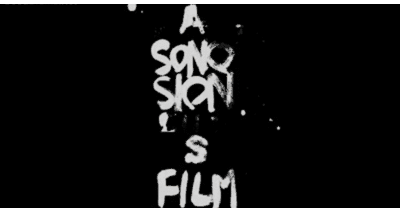
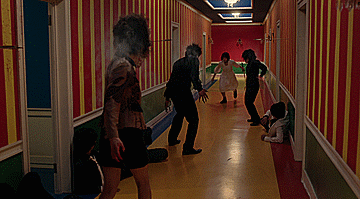
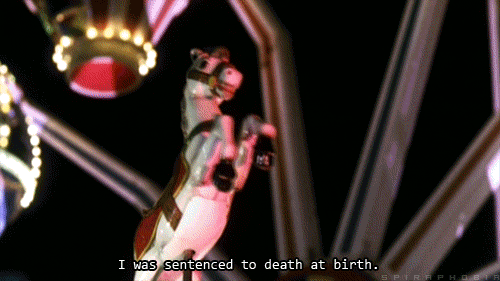
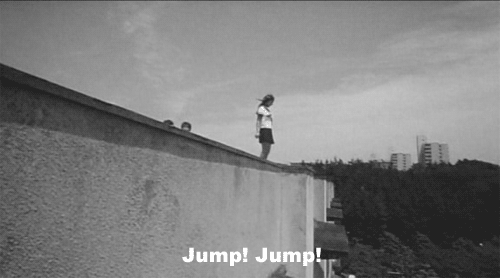
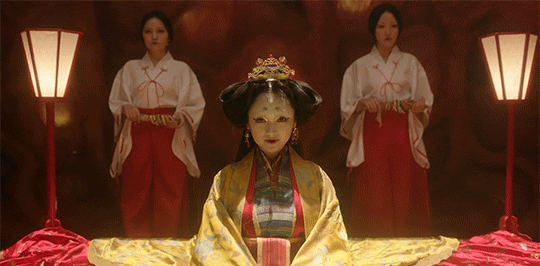

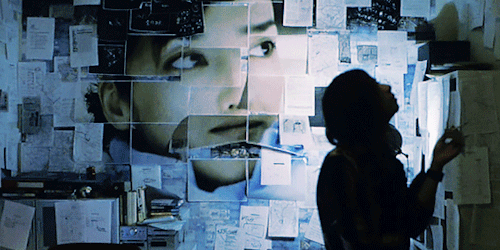
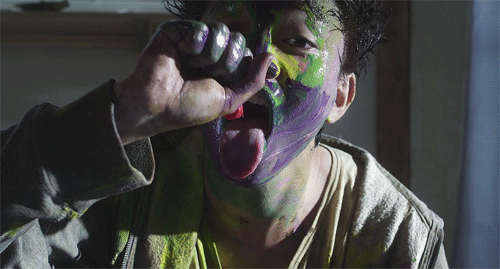

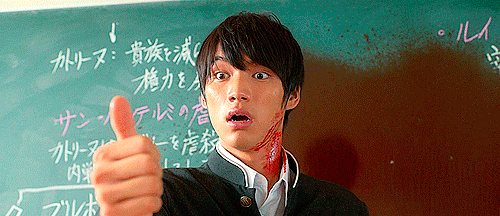


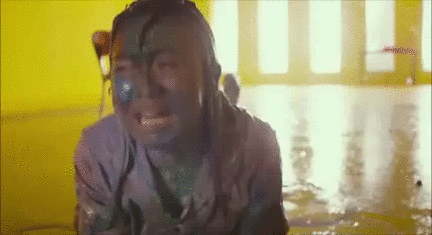



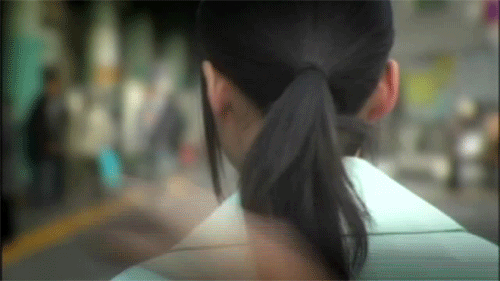
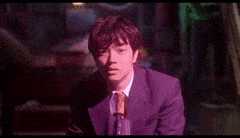
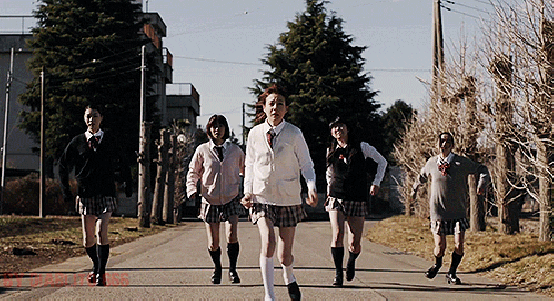
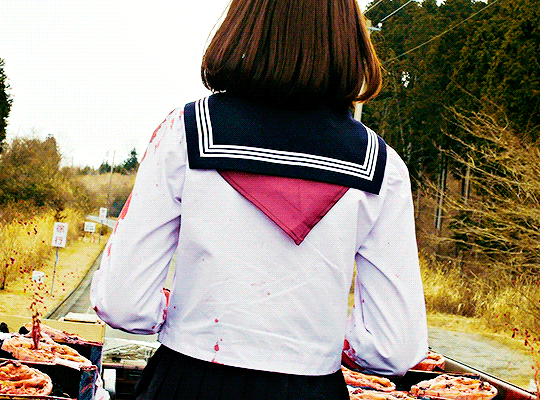
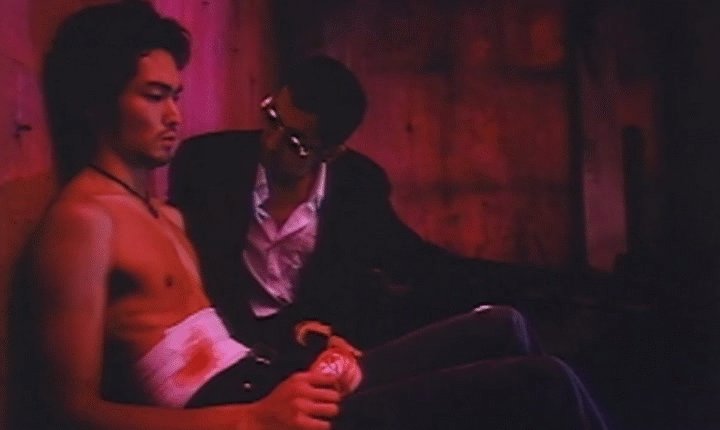

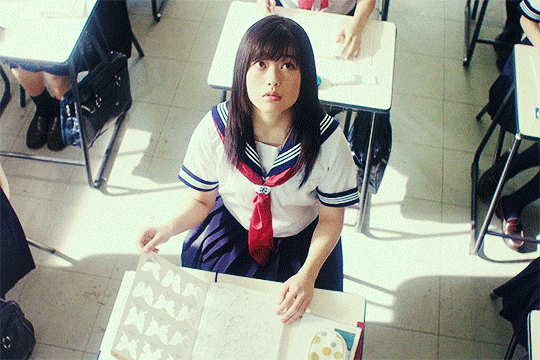
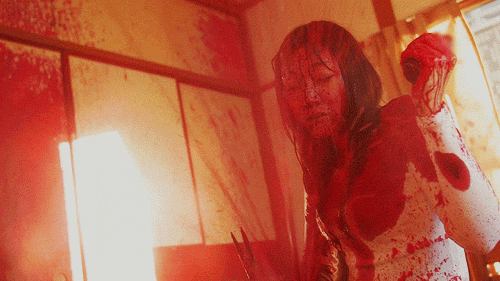

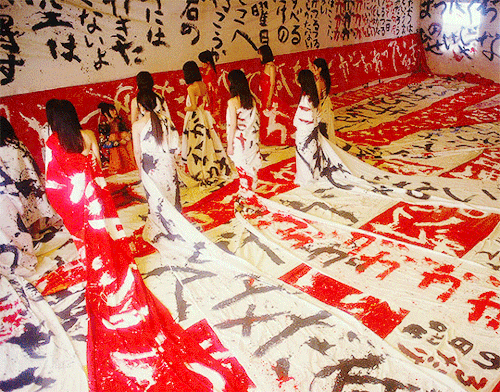
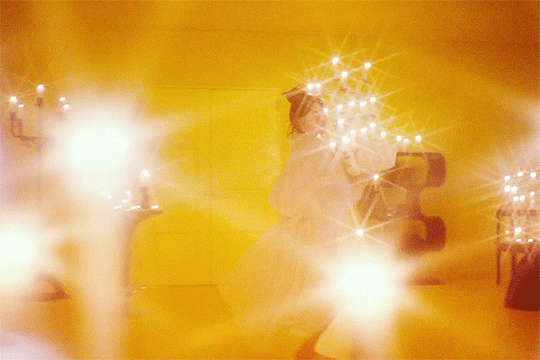
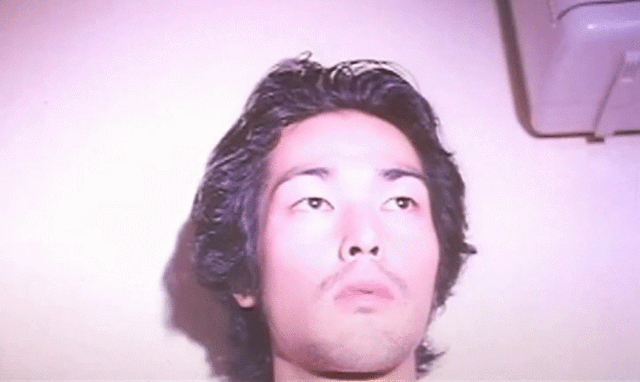
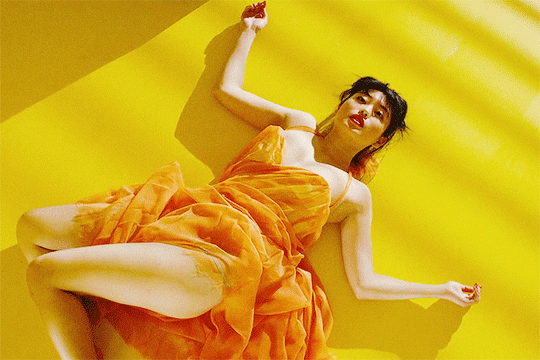
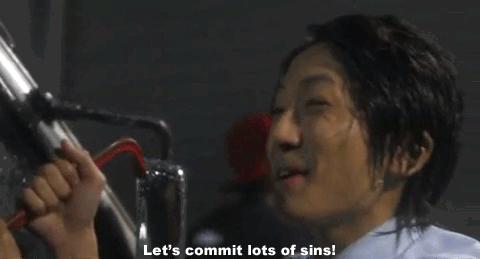
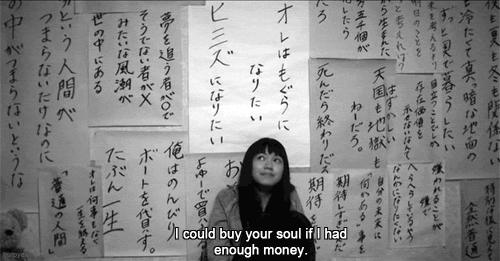
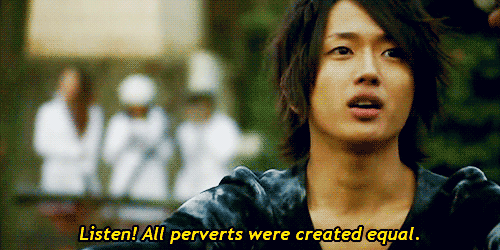
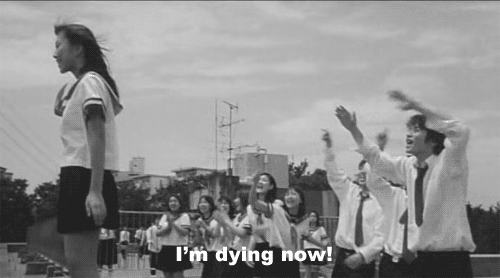

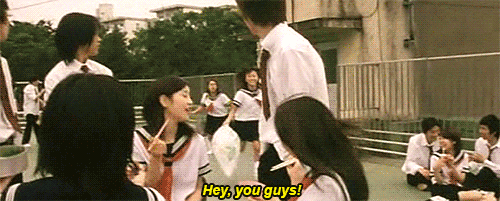
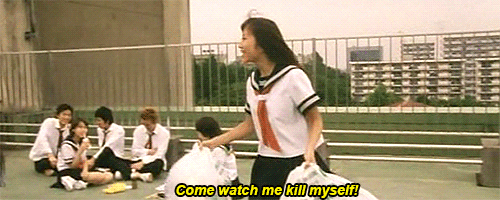
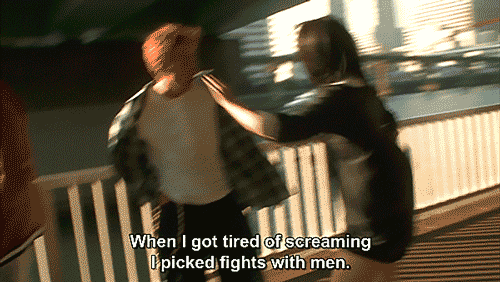

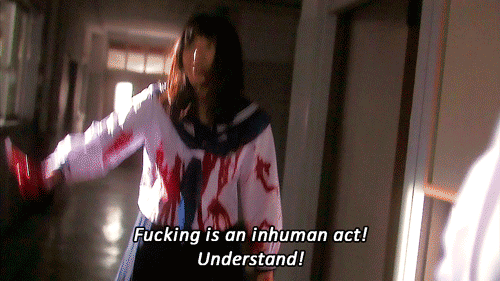


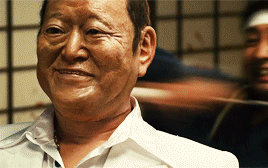
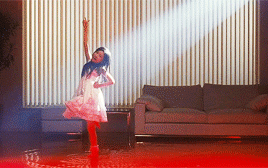

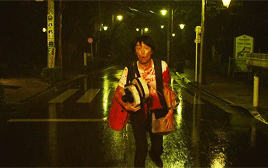
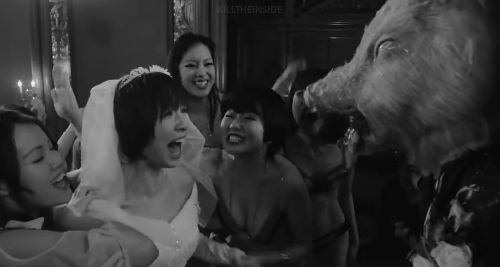
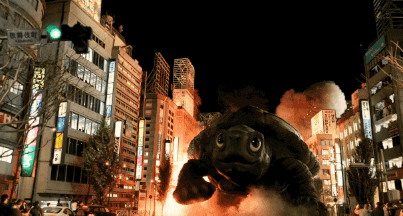

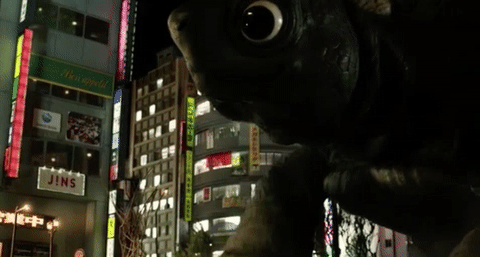
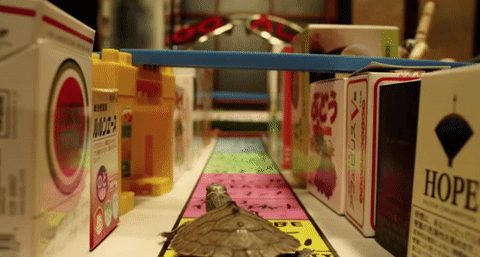


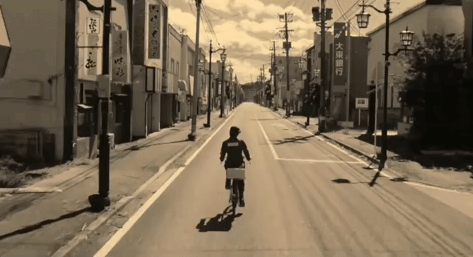

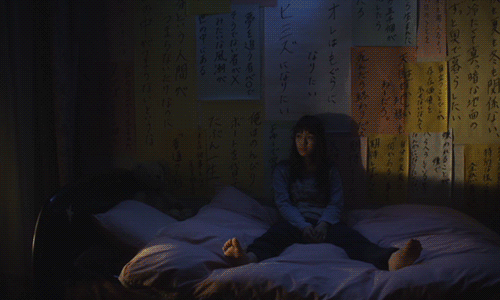


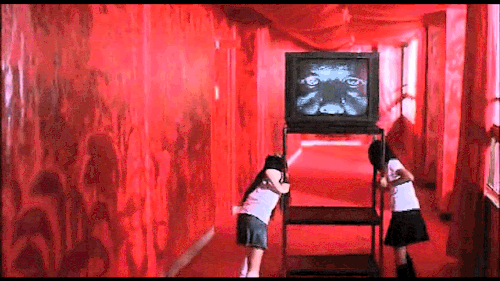
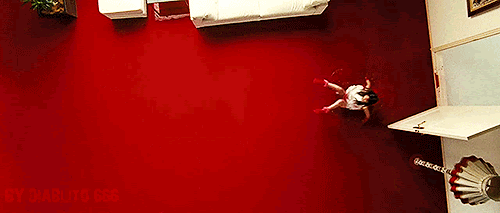




___
Further
Sion Sono @ IMDb
A Sion Sono Film @ Twitter
Five Controversial Arthouse Features from Japanese Filmmaker Sion Sono
SS @ Letterboxd
The History of Cinema. Sion Sono.
10% True, 90% Lies: SION SONO with David Wilentz
Recommends: Top 15 Sion Sono Films
channeling chaos – an interview with sion sono
Why Is Sion Sono One Of The World’s Most Exciting And Unusual Living Filmmakers?
sionsonofan @ Instagram
Sion Sono on Briefly Dying, His Favorite Nicolas Cage Performance, and Prisoners of the Ghostland
Documentary Review: The Sion Sono (2016) by Arata Oshima
Anyone think Sion Sono is worthy of the big C?
Sion Sono’s ‘Bad Film’ is a masterpiece
Sion Sono “The way things are, I don’t think I will film in Japan again”
Cinema as Music – An Interview with Sion Sono
Please Hollywood #8 : Jojo’s Bizarre Adventure par Sion Sono
Your guide to controversial Japanese filmmaker Sion Sono
SION SONO: PERVERT POWER
Quasi-Bodies and Kafka’s Castle in Sion Sono’s Crime Noir Guilty of Romance
The Dark Poetic Mind Of Sion Sono
Sion Sono is not big on faith and family
___
Extras
The Women of Sion Sono
Trailer: The Sion Sono
Exploitation and Empowerment: A Guide to Sion Sono Movies
LA TOTALE SONO SION : Le punk poète de Suicide club
______
Interview
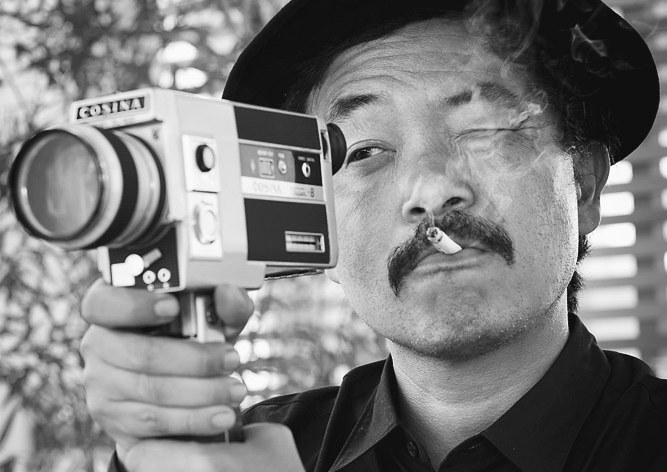
Offscreen: I know that your background is in poetry. So how do you go from poetry to filmmaking? Do you see any similarities between your poetry and filmmaking?
Sion Sono: I wanted to change from the word to something else. In poetry you always have the written word that is printed. When you are angry or sad it is a bit different when you are writing the emotion because the emotion can appear in the handwriting but not in a printed type. I wanted to keep in my mind the type of emotions I might have had with my hand writing so I began to film my poetry, like writing on a wall and filming it. I would do that on the street and try to maintain the emotion of the handwriting.
Offscreen: That is a very interesting because in our language writing is not very visual whereas in Japan and China, where you have calligraphy, it is very different. In fact there is a very famous Russian filmmaker named Sergei Eisenstein who studied haiku poetry to help him with his montage theories, which may or may not be relevant. But to get back to the idea of poetry, you often hear of certain filmmakers referred to as being poetic, like Tarkovsky for example, or John Ford. So I am just curious about how you would define a poetic film maker, or the sort of things you may look for in such a director?
Sion Sono: Well, the starting point was that I want to make a poetic, artistic type of film. I wanted to use film as the tool with which to express myself to the audience, and so I started to change the style of my film to suit this.
Offscreen: I’m not too familiar with the ero-guro (“erotic grotesque nonsense”) tradition or the writer Edogawa Rampo, so maybe you can talk a bit about whether they are influential on your work.
Sion Sono: Rampo is my favorite author.
Offscreen: Yes, well the actress Miyazaki Masumi, who was in Akio Jissoji’s The Mystery of Rampo (Rintaro Mayuzumi, Kazuyoshi Okuyama, 1994), is in your film. Is that one of the reasons why you used her?
Sion Sono: It was my boss the producer who hired her (laughter). But I did ask the producer if I could make a film with her.
Offscreen: Somebody once said that ero-guro is half beautiful and half grotesque, so I assume Masumi would be the beautiful aspect of the film? In other words, the film is supposed to be very beautiful but also very horrible.
Sion Sono: Yes you can say that, but it is not only black and white like that. Maybe in her character there is an ‘ero-guro’ side and in the beauty there is a grotesque side. If she is beautiful it will allow you to see the grotesque side more because of the contrast.
Offscreen: I’ve noticed in the few of the ero-guro films that I’ve seen that there seems to be a fascination with boxes. The Takashi Miike story in Three Extremes is called “The Box.” In The Mystery of Rampo there was this little animation film before the live action that deals with a woman who suffocates her husband in an heirloom chest; and in your film you have the cello which functions like a box. Although not a ero-guro film, there was a Japanese film that played here two years ago named The Bottled Fool by a young Japanese director named Hiroki Yamaguchi. It is about a group of people who are stuck in this freight elevator, so the freight elevator itself also functions as a box containing all the people. I am wondering whether you can elaborate on this idea of the box?
Sion Sono: If it occurs often in these films I would say it is Japan. It represents Japan. Japan is an island and it is kind of isolated from other places so I can see it as a symbol for Japan.
Offscreen: I don’t think I ever heard that before.
Sion Sono: Of course it does not mean that we have to be actually in a box, but that we as a nation do not have different ideas. We have an idea that we get stuck into. I think that Japan and Japanese society in reality is a very humid country and our ideas are ‘humid,’ they are not ‘dry.’ I’ve been actually thinking of making another film entitled “The Box.”
Offscreen: I want to ask you about the art direction. Inside the Masumi family house it looks almost normal, especially to us because it is very Western European style house, but in the setting where she works as a writer it is completely fantasized and grotesque. As well, the house where she lives becomes fantastic when it becomes red or yellow, when it changes color. It seems only when we are outside on the street that things look normal. Can you talk a little bit about the style of the art direction, in terms of reality and fantasy? Or maybe to make the question more specific: last night when you presented the film you said that the color white could represent reality and the color red fantasy. Can you just elaborate on how you use those colors to negotiate between reality and fantasy. I know it is never clear…because we are also thinking about internal and external, like, for example, everything inside is subjective.
Sion Sono: Yes you can say that the outside is the reality and inside is the internal, the more subjective.
Offscreen: How did you achieve the saturation of the colors?
Sion Sono: I did do some manipulation in post-production. I did not use any CGI. We also did some painting of the sets.
Offscreen: You had sets that were red, yellow or white. Did you use the same set repainted or did you have different sets?
Sion Sono: We used the same set and changed it.
Offscreen: You also wrote the music for the film. Do you play an instrument?
Sion Sono: Yes I play keyboards.
Offscreen: So you composed the music on the keyboard.
Sion Sono: Yes.
Offscreen: That is a lot of work, to write, to direct, to compose. But you did not act in it, although I know you acted in other films too.
Sion Sono: Well, I would have wanted to act too!
Offscreen: I remember when I read about The Suicide Club that you were thinking at that point of making three films that were connected. Is this film part of a trilogy with The Suicide Club & Noriko’s Dinner Table?
Sion Sono: This film does not have anything to do with the other two. I always wanted to make a trilogy but in reality it is very difficult.
Offscreen: How long was the shoot?
Sion Sono: Twenty days.
Offscreen: That is amazing. Another production question which relates to one of the film’s themes, identity. In the story you have the switching of the mother for the daughter in the cello watching the lovemaking, where first it is the daughter in the cello looking at her parents making love, and then the father switches and puts the mother in the cello and makes love to the daughter. But from the audience’s perspective we still see the mother, the actress Masumi. Obviously that is largely because you could not have had a man making love to a young girl, and yet it also works as part of the film’s theme of confused identity.
Sion Sono: I did not want to force things but if there was a way that I could have shot her, or if society would not have reacted against that I would have used the girl. If the girl would have been old enough to have had a sexual experience, then I would have used her.
Offscreen: I thought it was very clever having that slippage from the daughter to mother, but I am amazed that TLA has picked up this film for North American distribution because one of the biggest taboos in North America, actually the biggest taboo in North America, is pedophilia. Even if you are not using children but just having that situation it is a bigger taboo than incest even.
Sion Sono: Well this is really not a pedophilia film at all.
Offscreen: Oh yes, I’m not saying that, but the sensors in North America look for these things and don’t make a distinction between a sophisticated film that is dealing with it as a subject and a pornographic film. That is why I am surprised that a distributor has picked it up, but that is great. Along with that we have had a lot of American remakes of J-Horror, but I don’t think there has been a remake of an ero-guro film, and that is probably because it would be too problematic, with the ero-guro mix of sex with violence. I think in a way that is a good thing. It is a way for you to protect your film, because you know they won’t ever remake your film.
Offscreen: Again I think the film is very sophisticated in this way, but there are parts of the film that are comic and parts that are serious. I thought the first part of the story up until the part where the girl is to be guillotined, because she wants to die, was very serious. And if it had been funny, it might have been a problem but other parts of the film were funny and it was OK. Did you know which sequences you wanted as comic and which as serious? Was it difficult to switch from comic to serious?
Sion Sono: I think film has the power to make audiences realize that if you are alive you will have painful experiences, and you’ll get hurt. Showing the audience that you can laugh about it helps audiences laugh at their own pain or sorrow as well. I don’t want a film to go too deeply into terrible experiences or a person’s sorrow, but a shifting and balancing between them.
Offscreen: As well, I think it is clear to me that the father figure is pretty despicable. From start to finish there is nothing likable about him, he is a caricature, which is good because then no one will identify with the father. Whereas the mother and daughter are complex characters. And we are inside their heads throughout the film. I really like that aspect. If the father was a fully rounded character like the mother and the daughter then it might have been a problem.
Sion: That is exactly what I intended to do with this character. People really do not share his view, but at the same time he was a symbol of the most disgusting part of man, an aspect that people do not want to see, that is why you make him into a clown and you can laugh at him.
Offscreen: This is more of a statement than a question. What I like most about the film is the shifting of realities to such an extent that we do not know what in the film was dream and what was reality. And then in the end maybe everything is a dream. This reminded me of something my father once said to me when I was a child, that he wondered himself what the real world was, and that maybe the real world is what we have inside our heads when we sleep and what we live when we are awake is actually ‘unreal.’ This film made me think about that. It refuses to allow us to understand what is a real and what is fantasy.
Another way of looking at it, because the film has a story within a story structure, with the Masumi character (Taeko) as the writer of the story, is that we are seeing her imagination. It could also be a film about the creative process, something like Barton Fink for example. Or a little bit like 8 ½ where you see the creative process of a director who we see trying to make a film. In this film we have a writer who we learn is trying to write a story, and we are seeing the story which we think is fiction but then it becomes metafiction, a fiction inside of a fiction. We can never see inside the artist’s mind but the film is an idea of what it would be like inside an artist’s mind.
Sion: No, it is not only the writer here or the director, but everyone. It can be anyone’s mind. I do not care what is inside the writer’s mind but I am interested in everyone’s creativity. Everyone has a creative side which is of interest to me.
Offscreen: I’m curious because yesterday when you introduced the film you said the Japanese do not like this film. I wonder if it is because of the Western aspects to the film, especially thematically in terms of the psychology. And with some of the settings, like the circus, there is a lot we can relate to as Westerners. Is it perhaps too Western for Japanese audiences?
Sion: Well I guess you could say that I intended to make the film not as an easy film to be liked!
Offscreen: Are there any films that influenced you?
Sion Sono: Paul Verhoeven’s Showgirls is the best!
Offscreen: Wow, that’s very interesting! What about Kenji Fukasaku, for example Black Rose Mansion which features a transsexual man playing the part of a woman, who is always performing. It has a lot of theatricality, like your film. The circus sequences in your film reminded me a bit of this film.
Sion Sono: I am honoured that you make these connections.
Offscreen: I thought of another weird parallel. There is a record by the band, The Doors, with Jim Morrison, entitled Strange Days, where there are images of circus people on the album cover, a weightlifter, a mime, and your film reminded me of this image. And there is a song from this album called “People are Strange,” which describes the people in your film well! Do you know this album?
Sion Sono: Yes I know The Doors.
______________
24 of Sion Sono’s 57 films
______________
A Man’s Flower Road (1986)
‘With the clarity of hindsight to our advantage, it’s easy to claim Sion Sono’s 8mm debut feature film to be a work of mad genius. A Man’s Flower Road (or perhaps more appropriately, “A Man’s Hanamichi,” which refers to a stage used in kabuki theater) not only contains all the chaotic, demanding, and idiosyncratic signifiers that would become trademarks of this hard to define director, but it also gestures toward his influences with more transparency than does Sono’s later work. Situated somewhere between experimental performance and home movie, the film shares the mania of Gakuryu (a.k.a. Sogo) Ishii’s early films, and the analytical rebellion of Nagisa Oshima’s late ’60s work—a la Burst City and Diary of a Shinjuku Thief—an awkward thematic marriage that Sono would exploit in later films and that audiences would struggle to reconcile, especially with regard to the generous doses of violence. Distinctly bifurcated, A Man’s Flower Road opens with an explosion of lo-fi energy and an undefined foot chase, as the lead character (played by Sono) gleefully runs, fights, and provokes a group of men that oscillate between friend and foe. With grainy, hand-held camerawork, a dissonant soundtrack, guerrilla filmmaking signifiers, public defecation, and destruction of private property, the film’s first act is a study in anarchy as art, taking us from a brawl to a demonstration to an encounter with a gang of kappa, plus plenty of other non sequiturs in between.’ — Kathie Smith
the entirety
______________
Decisive Match! Girls Dorm Against Boys Dorm (1988)
‘Watching his 1988 film Decisive Match! Girls Dorm Against Boys Dorm, it’s hard not to imagine what a post-Suicide Club Sion Sono would do with this premise. Today, the battle-of-the-sexes set-up would likely lead the director to make a polished film of outsized violence and exuberant melodrama, as invested in bloodshed as it is youthful romance. But Sono’s second feature only occasionally offers glimpses of the strengths the director would later become known for. Take, for example, “the Boss” (Hiromi Kawanishi), the tough-as-nails leader of the girls’ dormitory who derives menace from her eyepatch-mimicking glasses and her sensual affection for an assault rifle. Though otherwise underdeveloped, her look and demeanor would fit perfectly in Sono’s Love Exposure or Tokyo Tribe. But the Boss, as well as a general penchant for weirdness (in one scene, a toy octopus walks across a table, apropos of nothing) are the only links to Sono’s future success in a movie that instead bears all the hallmarks of the director’s pre-breakthrough period: loose narrative threading, low production values, and a self-reflexivity spurred by Sono’s own onscreen presence.’ — Chris Mello
the entirety
________________
Bicycle Sighs (1991)
‘Shot in a sepia-toned Super 8 with pre-modern special effects, it’s about a group of friends who play baseball and who conjure an imaginary runner to round out the team. The runner (who wears a trench coat and a Godzilla mask) becomes real and eventually admonishes them to keep moving forward, to stretch first base out into the unimaginable distance. The short is beautiful, but Shiro wants to add a second act, a goofy sci-fi conspiracy story set around the rusted-out playground the friends call home. Keita isn’t interested. Sono will deftly blend imagery from the short into the primary narrative, transforming an off-beat but still realistic story into an increasingly abstract one of metaphorically blunt scenes of alienation and despair.’ — Sean Gilman
Excerpt
____________
The Room (1993)
‘The Room’s central conceit is its use of extremely long shots filled with minimal action or movement. In a 90 minute film, Sono has given us only 44 takes, lingering on empty streets and abandoned buildings long enough to test the patience of even the most forgiving viewer. Deliberately tedious, The Room won’t counter arguments of indulgence but its increasing minimalism eventually takes on a hypnotic quality, lending to its dreamlike, etherial atmosphere.’ — Hayley Scanlon
the entirety
_____________
I Am Keiko (1997)
‘The landscape recalls that seen in the conclusion of Hollis Frampton’s Zorn’s Lemma, another conceptual work fixated on the interplay between self-imposed rules and the mitigating drama of thought. And as with that tightly wound and endlessly suggestive cinematic artifact, I Am Keiko cuts off exactly when promised, at which point it’s finally freed from Sono-cum-Keiko’s collective headspace. Now we’re the ones counting the seconds as they pass.’ — Carson Lund
the entirety
______________
Utsushimi (2000)
‘On surface level Utsushimi is a poorly shot and edited film, with almost no style, lots of shaky cam and an almost pure Dogme 95 aesthetic. It is however unclear how much of that is intentional, to make all the points Sion is trying to make and how much of that is due to a low budget. If one can look past the amateurish look, which I personally kind of enjoy because it adds rawness and grittiness, there’s a beautiful film with a deep meaning underneath it all. A film like Utsushimi is especially interesting for those who are already accustomed with the director’s previous work. In this picture you can see a lot of the director’s stylistic flourishes which he went on to perfect in his later work (namely Love Exposure). There is already a characteristic use of music, both classical and not. In this film however there seems to be too much music. Even two songs playing on top of each other at one point. Again it’s difficult to determine how much of it was on purpose, but it’s also worth noting that he has excellent taste.’ — black <3 white
the entirety
_______________
Suicide Club (2001)
‘“Almost all Japanese people hate the movie Suicide Club,” says the filmmaker of his 2001 breakthrough. There’s no better place to begin, then, than one of the most polarising efforts in his canon.
‘Jumping on the bloody coattails of crossover hits like Ringu and Audition, Sono’s offering to the then-popular ‘J-horror’ genre is actually one of his most conventional stories … for the first two acts, at least. After a violent and shocking opening that sees a class of high school students commit mass suicide at a busy train station, this spooky Y2K-anxiety horror-mystery finds a group of detectives searching for answers as a dangerous phenomenon begins to spread across Japan via a mysterious website.
‘It introduces key Sono tropes: guerrilla footage, dynamic handheld camerawork, and surreal use of music, as the director offers a bold subtext to Japan’s early-2000s suicide epidemic (the result of a two-decade struggle with the economy and unemployment). But it’s the sudden tonal shift in the third act that makes Suicide Club such a memorable piece of work. When a glam-rock inspired villain unexpectedly breaks out into song, prefacing a series of bizarre conclusions to the film’s main plot, audiences will begin to understand that this is a director less interested with narrative convention than he is with making a statement.’ — James Balmont
Excerpt
Excerpt
_______________
Into A Dream (2005)
‘The film seems improvised, but it was actually all written down. You get this impression because the actors followed the script so precisely that they make it all seem extremely natural. Instead, as far as their movements are concerned, they could move around in total freedom because I wasn’t interested in the slightest in creating a ‘pretty image.’ The role of the head cameraman was, above all, to follow the actors around without worrying about the framing or the lights. Plus, before I began to write the script, I talked a lot with Tanaka Tetsushi about his role.’ — Sion Sono
the entirety
________________
Noriko’s Dinner Table (2005)
‘Though it sports a few grisly images of its own, Noriko’s Dinner Table borrows most of its bloodshed from its companion film, Suicide Club. Sono repurposes the opening of his breakthrough—during which 54 high school students jump in front of an oncoming train—several times here, first for context and later for impact. But rather than repeat himself, Sono fashions Noriko’s Dinner Table as a melodrama about the dissolution of family and the creation of oneself in the internet era. Its most harrowing moment finds a family on the verge of reunion as two runaway sisters—their ‘true’ selves lost to a cycle of performative self-discovery—enter a replica of their childhood home, while their father hides in a wardrobe, waiting to surprise his daughters and reunite his family after a two year absence. Were this film by another filmmaker, this potential reunion might be a source of joy for members of the family. Instead, Sono’s vision of a reunion is a horror movie scenario in which the monster in the closet threatens to destroy the lives the girls have found for themselves and force them back into the roles they were born into.’ — Chris Mello
Trailer
__________
Hazard (2005)
‘If there’s one word that beats at the heart of the violent, restless Hazard, Sion Sono’s 11th film, it’s “transcendence.” Nominally a crime story about a Japanese college student named Shinichi (Jo Odagiri) who falls in with the wrong crowd on the mean streets of New York, Hazard intends to upend given notions of what transcendence might look like. Shinichi’s “wrong crowd”—Lee (Jai West) and Takeda (Motoki Fukami)—rob convenience stores and sell speed-laced cones from a tinkling ice cream truck. But rather than lead Shinichi to an early grave, they turn out to be best friends, his family, and his road to transformation. In this world, holding up a restaurant is a means to self-actualization. Transcendence doesn’t really mean much, though, if you don’t have a reality to transcend, and Sono uses his handheld digital camera to give his New York a jagged, concrete seediness that would make Abel Ferrara nod approvingly. (Conversely, scenes that take place in Japan are given a smooth and serene look.)’ — Kent M. Beeson
the entirety
________________
Exte: Hair Extensions (2007)
‘An aspiring hair dresser (Kuriyama) becomes the infatuation of a tricophilic man who sells hair extensions to nearby hair salons. The source of the hair is the corpse of a girl whose dead body continues to grow beautiful, voluminous, black hair that comes alive, driving those who use the extensions insane or killing them.’ — Letterboxd
Trailer
________________
Love Exposure (2008)
‘Love Exposure is an epic, four-hour romantic comedy about terrible fathers, upskirt photography, Catholicism and the meaning of love. Where Bicycle Sighs was a fairly typical minimalist art film and Suicide Club was firmly entrenched in the millennial wave of Japanese horror cinema, Love Exposure seems to come out of nowhere, a wholly original pop construct burst forth from a cracked heart. If it has a stylistic precursor, it’s in the freewheeling exuberance of 70s exploitation films, the camera rushing in and out of handheld frames, mass karate fights and arterial sprays likely to spring to life at any moment, a lurid glee taken in the cinema’s simulacra of violence. Resting uneasily alongside the slashed throats and broken members, however, is a fundamentally sweet story of young love among the highly damaged, the story of a generation inventing romance on its own terms after their fathers, with their selfish cruelty, have very nearly drained life of all potential meaning.’ — Sean Gilman
Trailer
_______________
Make the Last Wish (2009)
‘This movie is loosely based on the american manga “Make 5 Wishes”, which follows the lonely teenage girl Hana who is obsessed with Avril Lavigne as a way to escape from her current life. In the manga, Avril plays as her conscience and as her imaginary friend. Things change as soon as Hana orders a demon-like creature which grants her any 5 wishes of her choice. The excitement, hope and companionship that this “real” creature provides her, slowly starts replacing the imaginary Avril in her mind. However, serious consequences come along with each one of her wishes.
‘The main difference in the live-action adaptation is the change of Hana with her twin sister Minami as the main character, who didn’t exist in the manga. Hana’s story is told through Minami’s flashbacks, as she explains her reasons to join the singing competition. This competition, which didn’t exist in the manga, takes most of the plot in the movie. On the other hand, the manga focuses on Hana and her interactions with the people around her. While the doll is seen as a way to make any wish come true just by asking it, the auditions convey the message that you must work hard if you want your dreams to come true. A nice change by Sion Sono which added more depth to the story.’ — Dare Daniel
the entirety
_____________
Cold Fish (2010)
‘Shamoto runs a small tropical fish shop. His second wife, Taeko, does not get along with his daughter, Mitsuko, and this worries him. One day Mitsuko is caught shoplifting at a grocery store. There they meet a friendly man named Murata, who helps to settle things between Mitsuko and the store manager. Since Murata also runs a tropical fish shop, Shamoto establishes a bond with him and they become friends; Mitsuko even begins working for Murata and living at his house. What Shamoto doesn t know, however, is that Murata hides many dark secrets behind his friendly face. He sells cheap fish to his customers for high prices with his artful lies. If anyone detects his fraud or refuses to go along with his money-making schemes, they re murdered and their bodies disposed of by Murata and his wife in grisly ways. Shamoto is suddenly taken in by Murata s tactics, and by the time he realizes that Murata is insane, and a serial killer who has made over fifty people disappear, he is powerless to do anything about it. But now Mitsuko is a hostage at Murata s home, and Shamoto himself has become the killer s unwilling accomplice. Cruel murders gradually cripple his mind and finally the ordinary man is being driven to the edge of the abyss.’ — Third Window Films
Trailer
___________
Himizu (2011)
‘Set after the Tohoku earthquake and tsunami, all 14-year-old Sumida Yuichi wants to become is a regular boy and live a decent life. His environment though repeatedly drags him into the mud. He runs his parent’s rental boat business, which is located next to a nondescript lake. His mother frequently comes home with different men and soon she leaves him entirely. His father only comes around looking for money. Chazawa Keiko is a classmate of Sumida Yuichi. She harbors a severe crush on Yuichi. Keiko’s home life isn’t much better than Yuichi’s. Her mother builds a gallows with a noose in place for Keiko to take her own life. Her mother believes her life would be better off without Keiko. Under these circumstances, Keiko pays a visit to Yuichi’s home. A group of people are lingering nearby who live in makeshift tents on the property. Keiko tries to befriend Yuichi, but she is berated and even physically assaulted. She doesn’t get deterred though and sticks around.’ — Letterboxd
Trailer
_____________
Bad Film (2012)
‘It’s impossible to truly get lost in a world as ugly as Bad Film‘s. All of the technical issues add up to a film that never lets the audience forget it’s a film. Whether it’s the existence of other cameras and microphones that are periodically on screen (something that is hilariously given justification in the narrative) or the fact that the dialogue is barely audible, and the periodic bouts of English don’t have subtitles, it is the very definition of artificial. For 161 minutes, I felt like I was the butt of a joke. When the picture cut out for about ten seconds about halfway through while the tape was changed, it was a perfect moment. Was it over? Nope, guess not. Good.
‘Because you know what? I have never had an experience like watching Bad Film in a crowded theater. Ever. And I will never have that experience again. Bad Film is truly unique, a one-of-a-kind project. Making comparisons across genres is basically the worst thing ever, but it’s kind of like the Deadly Premonition of movies: a technically flawed work of art that is the execution of a vision of a deranged Japanese mind, and it’s something I wouldn’t want to change in the slightest. That makes it difficult to talk about, because it might read like sarcasm when I exclaim that the presence of a time-code on a particularly fascinating scene in the film is amazing, but it isn’t. It’s completely amazing.’ — Alec Kubas-Meyer
Excerpt
_____________
Why Don’t You Play in Hell? (2014)
‘A grand ensemble piece, Why Don’t You Play In Hell? follows the actions of three disparate mobs across twenty years. Rival gang bosses take charge over two of the groups, while a third focusses on The Fuck Bombers, a bande (à part) of cinephiles with aspirations of becoming cineastes and producing the greatest film of all time. Led by Hirata, The Fuck Bombers are essentially the film’s protagonists, although so sprawling is the nature of the piece that such traditional labels don’t really apply. We trace the passing of time via their (failed) endeavours, and see the downfall of the communal theatrical experience and a demand for quality cinema through their eyes.
‘This exploration of the death of cinema is wrapped around and interweaves with a multi-generational tale of familial Yakuza warfare. Such contrived background noise to a concern as lofty as the one ultimately at the heart of Why Don’t You Play In Hell? is perhaps Sono’s attempt at shedding a comforting light on the age of the movies that is about to pass, and the ridiculous tropes and cliches to which the contemporary cinema comes attached. This is further exemplified in The Blood Of Wolves, an archetypical lone samurai picture that Hirata dreams of within the movie. As every cliche under the rising sun is rolled out one can’t help but realise that the self-declared saviour of the movies is as hapless an ambassador for the future of the medium as the anonymous figures he’s rallying against.’ — Adam Bat
Trailer
______________
Tokyo Tribe (2014)
‘Sion Sono has made some weird shit, but Tokyo Tribe tops them all, both in terms of enveloping insanity and a feverishly contained vision. It’s beyond description in every way, beginning with a mesmerizing tracking shot that soars and dives, immediately showcasing a neon-drenched and a seductively rainy world. Playing like a mix of early-2000s Hip-Hop music videos, Yakuza movies, and an explosion at a fireworks factory; Tokyo Tribe is a Hip-Hopera of sorts where almost every line of dialogue is rapped
‘And yet, that level of absurdity is raised and raised throughout its two hour run-time, culminating in a final battle that makes the last act of Why Don’t You Play in Hell? feel like a warm-up. The vision is darkly misogynistic, revealing a world of repeated abuse to women, but this very tone is upended when the true message of the film is revealed. Without spoilers, the film is very optimistic and hopeful, aiming for the truth and community of solidarity without veering into sentimentalism.’ — Silent Dawn
Trailer
Excerpt
________
Tag (2015)
‘TAG’s opening sequence – which surely qualifies as one of the most arresting in film history – begins with an idealised scene: happy schoolgirls on a bus, heading off on a trip, blithely laughing and throwing pillows back and forth, as their female teacher comments on how “nice and sunny” it is. Yet as Mitsuko bends over to pick up her dropped pen, a supernatural force shears off half the bus, bloodily taking the heads and upper torsos of the other girls with it, and leaving Mitsuko covered in blood and fleeing what appears to be a leafy gust of wind (with its own Evil Dead-style shaky cam POV shot as it chases her down the road). Later, her lessons with best friends Aki (Yuki Sakurai), Taeko (Ari Hiraoko) and Sur (Ami Tomite) – short for ‘Surreal’ – will be brought to a violent end when the school’s teachers suddenly turn guns and grenade launchers on their student body.’ — Anton Bitel
Trailer
______________
The Whispering Star (2015)
‘Sion Sono had one of his most prolific years in 2015, eventually managing to shoot six films, including this particular one that stands apart due to its minimalism, a concept almost unknown to one of the most maximalist filmmakers of the world.
‘80% of the universe is populated by androids. The few humans left have chosen to live in silence, enforcing a law that forbids any sound over 30db. A female humanoid robot named Yoko lives in a spaceship shaped like a traditional Japanese house, while delivering packages to humans all over the galaxy. In the vast intervals between the deliveries, Yoko cleans and makes tea, in one of Sono’s favorite practices, who seems to relish shooting his real-life wife (Megumi Kagurazaka who plays Yoko) doing domestic chores. Her sole company is a robot attached to the spaceship’s control panel, who seems to have a character of its own.
‘“Whispering Star” is a unique entry in Sion Sono’s filmography, and a film relatively difficult to watch, due to its minimalism and slow pace. However, it is a very beautiful and meaningful movie, which is bound to stay in memory due to its uniqueness.’ — Panos Kotzathanasis
Trailer
Excerpt
_____________
Antiporno (2016)
‘Antiporno is one of the most relatable films in recent time to equate with Carter’s hypothetical concept of the moral pornographer. Right from the title, it is understood that the “anti” implies something that is the opposite or not-porno. The film does not give us prim, proper, or prudish characters covering up their whole bodies as the antithesis of porn, but rather a world that still communicates in the same audiovisual language–nudity, violence, dirty-talking characters–but reaches different ends. Sion Sono conjures a potentially pornographic space but fills it intermittently with political ideology that confronts the traditional gatekeepers–which is to say men–of erotica and culture at large. This infusion of politics into a softcore film–which incidentally follows the fuck-interlude-fuck-interlude formula of Roman Porno–is also directly reminiscent of the Marquis de Sade’s own work. For example, his 1795 classic Philosophy in the Boudoir includes the famous manifesto “Yet Another Effort Frenchmen, If You Would Become Republicans,” in which he attacks French Revolution-era religion. Kyoko of Antiporno can very much join the list of Sadeian women that began with Juliette and Justine.’
— Joseph E. Dwyer
Excerpt
Excerpt
______________
Tokyo Vampire Hotel (2017)
‘The first thing you should know about Sono Sion’s characteristically unhinged “Tokyo Vampire Hotel” is that — spoiler alert? — most of it takes place inside of a vampire’s vagina. Well, technically speaking, most of it takes place inside of a massive hotel, but that massive hotel is actually squeezed into an inter-dimensional pocket of space-time that’s located between the legs of a decrepit vampire queen. And that decrepit vampire queen lives in Tokyo, hence the title “Tokyo Vampire Hotel.” Or maybe lives in Romania. It’s kind of unclear. The hotel is definitely in her vagina, though — there’s no doubt about that.
‘A demented cocaine giallo that splits the difference between Suzuki Seijun and Claire Denis (that is, between “Tokyo Drifter” and “Trouble Every Day”), Sono Sion’s latest exercise in gonzo digital mayhem is maybe the wildest thing he’s ever made; that’s high praise when discussing the punk auteur responsible for the likes of “Love Exposure” (a four-hour epic about a teenage Catholic who falls in with a secret cult of up-skirt panty photographers) and “Tokyo Tribe” (a hyper-violent rap opera about a gangster who torches an entire city to the ground to compensate for his micro-penis).
‘Sexed up to the gills, awash in national anxieties, and absolutely drowning in CGI blood, “Tokyo Vampire Hotel” might also be the most frantic and incoherent thing Sono has ever made.’ — David Ehrlich
Trailer1
Trailer 2
_______________
The Forest of Love (2019)
‘As frenzied as Sono’s best work, but as unfocused as some of his worst, “The Forest of Love” is hard to find your way through. It’s repetitive and self-contradictory in a way that Sono doesn’t always seem to have under his control; it’s rare to see a movie this sensitive towards female trauma also be so happy to indulge in it, and that dilemma isn’t as productively expressed here as it has been in some of the director’s previous work. But Sono’s natural discordance is part of what makes him so necessary. Even the most extreme DIY filmmakers are seldom this feral or willing to follow their muse into the darkness. “In movies,” one of Shin’s young friends proclaims, “we have total freedom!” “The Forest of Love” is a muddle, but it unimpeachably proves that adage true.’ — David Ehrlich
Trailer
_______________
Red Post on Escher Street (2020)
‘An exhilarating postmodern comedy about people fighting for every moment of screen time they’re able to wrest from this stupid world before they have to leave it, “Red Post on Escher Street” is the best argument for Sono’s vital body of work since 2015’s “The Whispering Star,” and a perfect opportunity for newcomers to get their toes wet. While the riotous likes of “Love Exposure” and “Tokyo Tribe” have been fueled by the sheer exuberance of Sono’s cinema, “Red Post on Escher Street” is so much fun for how it celebrates that exuberance as an end unto itself — for how, to an even more self-reflexive degree than the great “Why Don’t You Play in Hell?,” it uses the filmmaking process itself as a lens through which to focus our attention on the pure force of will that Sono brings to everything he does and to all of the characters through which he does it.’ — David Ehrlich
Trailer
*
p.s. Hey. ** _Black_Acrylic, Hi, Ben. She’s generally pretty interesting: Banner. Or I mean I think so. Ah, at long last, my lucky ears (and related bod, of course). Everyone, Here’s a great sign that this pandemic thing is finally sputtering out: _Black_Acrylic’s party in a podcast is back! Get real and unreal in one fell swoop. Here he is to tell you where and what. _B_A: ‘The comeback episode of Play Therapy is now online here via Tak Tent Radio! Ben ‘Jack Your Body’ Robinson is back to bring you Italo, German Cosmic Disco, obscure Swiss Coldwave and assorted other stuff too. Gorging therein is highly recommended. Great, Ben! Have a bouncy weekend! ** Misanthrope, It’s Memorial Day weekend again? And this time it’s fully practicable? It sounds like you’ve got an appropriately festive but happily self-serving plan. Get fresh, and I’ll see what I can do over here where just living still feels like a holiday at the moment. ** Dominik, Hi!!! You know that DiCaprio gif, which I guess proves my point. Man oh man. That dogface filter has had a very, very long life, yes, and yes. I don’t think you’re on Facebook much, but the thing that makes me most ballistic of all is when people use variations on this Facebook-providing reaction possibility. It’s horribly prevalent in my feed at least, and it makes me want to condemn the persons who use it to a brutal death for some reason. French is cool and everything, but it cannot compete with a giant swearing vocabulary. Oh, tough choice on which artwork to ask love to give me. I guess a wheel chair made of razor blades appeals to some awful secret side of myself, so maybe that. Thanks, love! Love magically and suddenly making the neck of every dog on earth as long as a giraffe’s, G. Have a big fun weekend! ** jamie, Thanks a ton, buddy. Razor blades are curiosities, I agree. Dangerous as hell but pretty as pictures. Anyway, yeah, I’m so happy you liked the show. Ha ha, yes, the family in our film turns — or tries to turn –their bathroom into hell, or at least its entrance, for the haunted house. Amazing you remembered that, but it will be a nice detail, I hope. 10 euros to Paris? And presumably vice-versa? Wow, I hope that survives. Zac and I have been wanting to go that amusement park Walibi that’s not too far from Brussels, so… hmmmm. My weekend should be okay. I’m heading off shortly to help with the color correcting with the ‘Jerk’ film, and then Zac and I are going to spend the day going to galleries. And maybe I’ll write something. Man, I ultra-hope that your test this morning gives you all the-clear. Did it? If so, did you dance a little jig? And did you find a way to de-quarantine within acceptable limits and thusly upgrade your weekend? Votive candle lit, man. Love, me. ** Bzzt, Hi, Quinn! Great to see you! Thanks about the podcast. It was fun to do. It’s a great podcast in general. I’m an addict. Well, he said he was on the blog, but I don’t know what name he used or uses here if he ever drops in these days, so I don’t know. New with me? I’m still flying high from the effect of the reopening. Just going to cafes and seeing art and eating in restaurants and so on puts me in a 24/7 great mood. I’m easy, at least for now. So sorry to hear you lost that job. Yeah, fitting into the world of corporate law sounds like a real toughy. I guess just try to see it as a thing that further focuses you and what you want? Whatever it takes to get that preemptive ‘failure as a writer’ self-condemnation out of your head because that’s just your chemicals bullying you. I don’t know who said that about the 20s being your happiest, etc., but that just seems like generalising romantic nonsense to me. For me, great things increased exponentially in my 30s, 40s and beyond. Patience with oneself is pretty key, yeah. Look, I feel like I was a mixed-up, weird, emotionally messy nobody before I, one, decided I was a writer and, two, started publishing and received that recognition and support, so I personally think your instincts could be totally right on, i.e. that getting to the point that your writing is both your main identity and recognised by ‘the world’ will solidify you as a person. Being a writer, knowing myself to be a writer, being known by others as a writer is the key to whatever happiness and solidity and life I have. I hate summer. It’s my least favorite part of the year by far, and always has been, and I’m dreading the summer. My main itinerary is to get fully vaxxed and travel because I’ve been stuck in France for what feels like an extremely long time. Happy birthday a teeny bit early! Try to have a joyous dinner and, yeah, I hope you find the excitement about writing and the peace of mind about yourself that you so obviously warrant. xo. ** David Ehrenstein, Ha ha, that was really pushing it, David. ** Shane Christmass, As you surely know, Strand is mostly a photographer, and a great one. He only made two films. Anyway, I’m going to see what I can cook up re: him. Have a good Saturday-Sunday combo. ** Okay. This weekend the blog offers you a sensorial feast courtesy of the highly fun and beauteous films of Mr. Sion Sono. Have at it please. See you on Monday.




 Now available in North America
Now available in North America 
Hi!!
Uh… I’m indeed not on Facebook much, so I run into this “reaction” less often, but… Jesus, does it look irritating. Yeah, the murderous intentions are perfectly understandable, hah.
Yes! I like the razor blade wheelchair, too! And I’d also be happy to hang some stills from Sigalit Landau’s “Barbed Hula” on my walls.
Hahaha, I have a dachshund, so she’d look extra funny with a giraffe neck! Love going to the ER with a plastic dolphin stuck in his ass (but it was fun for a while), Od.
Genius is bandied about far too often, yet, Sono, personifies the term. I am so glad Sono is gaining wider acclaim and recognition.
Netflix alone championing his vision and works also highlights something specific and untrue in Western Civilisation – that mainstream audiences don’t like such things as foreign cinema. It proves that the “mainstream” and such like, in their masses, themselves can always fall in love with the cult and niche and expand their tastes.
Hey Dennis. Hope yr having a great weekend. All’s well in mtl. Mostly just hanging with my cat. I’m not sure if you can get Dox in France, the novel I interviewed alex about, but he gave me a PDF copy of it and I would be happy to share it with you if your interested. He has given me permission to share it with people.
Below is a link to my excerpt in expat.
https://expatpress.com/excerpt-from-purgatory-ian-townsend/
Byeeee
Ian
I don’t know of Sion Sono’s work, but anyone who admires Edogawa Rampo is a friend of mine. I’m a huge Rampo fan. He’s worthy of being a subject matter for your blog – if not already? I want to share some great news for me (and the cinematic world) the documentary on my wife Lun*na “Who Is Lun*na Menoh?” won a best documentary award from CAAMFEST 2021. I’m in the film as well. In fact, I’m in two documentary films this year – including “The Sparks Brothers.” I want to become a professional ‘talking head’ for documentaries. I think I can make this into a career move on my part. Nevertheless I’m thrilled for Lun*na and the production team. And, the new Sparks song from Annette “So May We Start” is brilliant. Obviously I’m in a good mood this weekend.
Dennis, Yeah, pretty much all restrictions are off over here, though it looks like some are still pushing like Sisyphus against that. But I think we’re all good. Who knows what the future will bring, though?
Almost finished with the MD stuff. Tomorrow night at the latest. Probably tonight though.
Think I’m gonna get a haircut today too. Just get all the errands done today and then coast for the rest of today and the next two days. I’m looking forward to it.
Onward and upward!
Great to see a weekend devoted to the deeply stange Sion Sono
I had Cold Fish on my DVD rental wish list for a long time without knowing who Sono even was. I should defo add it back on there now, seeing as how he’s such a fascinating artist.
The football season ended last night with the Champions League final, and I’m happy to report that Leeds United finished a creditable 9th in the UK’s Premier League. For a newly promoted side that’s really excellent and I’d say Marcelo Bielsa is a shoo-in for Manager of the Year.
I didn’t know HAZARD was able for free subtitled viewing on YouTube, so I watched that last night. For a gangster film dripping New York grime, it’s also pretty upbeat. I plan to watch RED POST ON ESCHER STREET some time next week.
I did finally make it to THE AMUSEMENT PARK yesterday. Even though the theater only seated 15 people, it felt livelier and more like a real return to the movies than my other 2 moviegoing experiences this month, since almost every seat was taken. (Also, it was great that the theater sold bottled water!) The film’s excellent. I understand why the Lutheran Church’s social services design rejected it – as did Romero himself, who thought it was amateurish work-for-hire – because it’s so bleak it makes DAY OF THE DEAD look like a party. the fact that the current restoration had to be made from a faded 16mm print led to it looking even grimier and closer to reality.
There’s now a legal recreational marijuana dispensary a few storefronts up from the IFC Center, the first one I’ve seen since it was legalized in NY state in March. Having grown up at the height of the war on drugs in the ’80s, this feels like a milestone.
Hey Dennis.
I’ve only seen Tag and now I want to watch all of the rest of Sion Sono’s films and am going to work my way through them, so thanks for that. Do you have a favourite or is there a good place to start?
My Covid test was negative. I didn’t dance a little jig as I was too bleary eyed when I got the text this morning, but I’m very happy and really hoping that’s my last ever one.
How was your weekend? Your plans sounded nice and out in the world-y.
I looked up Walibi and even watched some of the POV videos, which were quite terrifying to a theme park virgin like myself. The cheap Brussels – Paris train company is called Izy and they seem to be still going with cheap tickets.
A wee while ago I said I had a gif thing that I might send you for a possible guest post, but I looked at it last night and it’s set up as a Blogger draft, which seems to mean I can’t extract the gifs or trace their sources. Do you know any way to do this with your gif mastery? The alternative is to try and find every gif again, but there’s an awful lot of them.
I hope your Monday is a champion.
Love,
jamie
D., Sion Sono is amazing and so is your Wake Island podcast – I loved your conversation about the escorts/slaves at the end and I empathise with your frustration about the objectification of these individuals. Have you ever seen any of Yoshishige Yoshida’s stuff? Sono has sometimes felt like a less refined version of Yoshida, and I mean ‘less refined’ in a positive sense too. I look forward & look forward to I Wished
J
Hey, Dennis!
It has been a wonderful week on here (Sharp and the Guyotat I found especially interesting), but this one takes the cake for me. I’ve been really curious about Sono’s work for a couple of months now—I have an Internet acquaintance who’s a huge fan of him and all of the stuff he’s shared has me super intrigued. This seals the deal, I think. What’s your favorite of his? I might start with “Strange Circus”. Let me know if you think that’s a sound course of action or not. Anyway, I wish I’d better kept up with the excellent series of posts this past couple of days (“No Longer Human”!!!), but I was knackered by my finals and I’ve just been enjoying the lazy post-semester haze for a bit, just lying about with a ton of movies. The good news is that all of my grades are strong; perplexingly, I even wound up with decent marks in Logic (?!). So that’s a relief. Now I’m ready to kick off the summer, starting with tomorrow, which will be devoted to minor festivities in celebration of what would have been Rainer Werner Fassbinder’s 76th birthday. I have a pretty nice week (hopefully) planned ahead. So things are okay on my end. How about you? What have you been up to? All good things, yeah? That’s my hope, anyway. And either way, that even better things are ahead. Let me know. Much love and well-wishes as always. May your Monday dazzle.